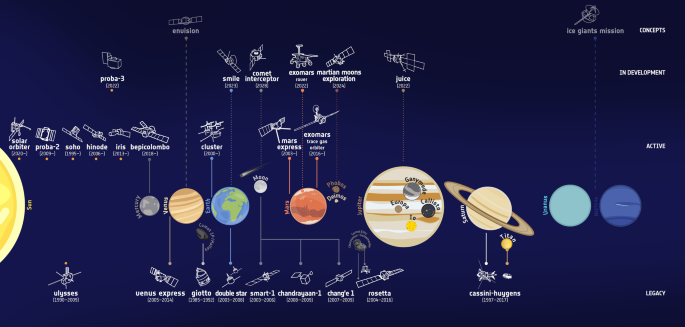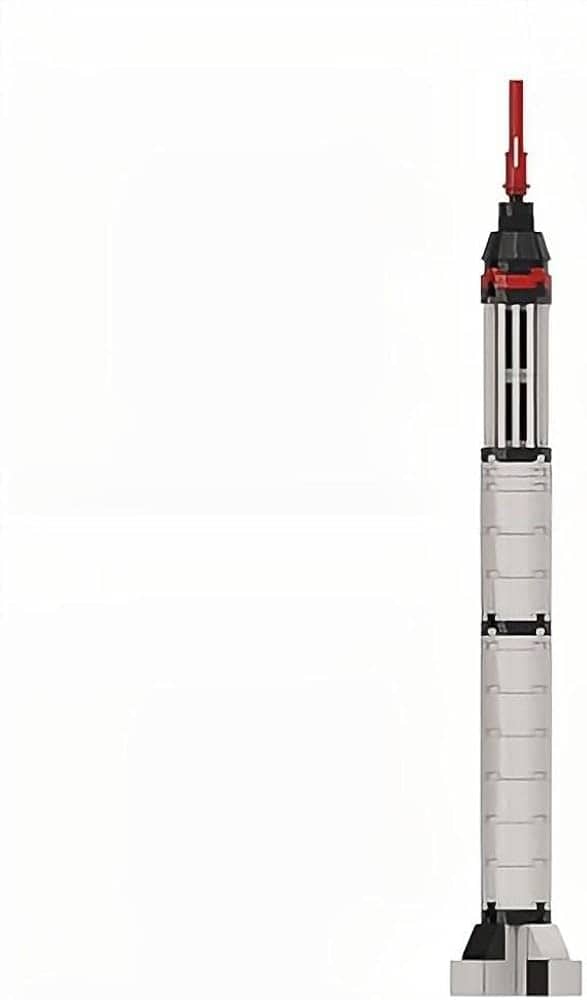Saturn is larger than Mercury in both size and mass. It also has more moons.
Saturn and Mercury are two fascinating planets within our solar system. Although different in many aspects, such as size, composition, and atmosphere, they each hold their own unique characteristics that make them essential players in the vast expanse of space.
From the majestic rings of Saturn to the scorching temperatures of Mercury, these planets offer a glimpse into the diverse nature of our cosmic neighborhood. Understanding the distinctions between Saturn and Mercury allows us to appreciate the wonders of our solar system and the complexities that lie beyond our earthly realm. Let’s delve deeper into the contrasting features of these two intriguing celestial bodies.
Size
The size of Saturn and Mercury can be compared based on their diameters and volumes.
Comparison Of Diameters
| Planet | Diameter (km) |
|---|---|
| Saturn | 116,464 |
| Mercury | 4,880 |
Comparison Of Volumes
- Saturn: Has a volume of 827.13 trillion cubic kilometers.
- Mercury: Has a volume of 60.83 billion cubic kilometers.

Credit: www.amazon.com
Composition
The composition of Saturn and Mercury varies significantly in terms of their atmospheric and surface makeup. Let’s delve into the details of the composition of these two intriguing planets.
Atmospheric Composition
Saturn: Hydrogen and helium dominate Saturn’s atmosphere.
Mercury: Mercury has a thin atmosphere composed mainly of oxygen, sodium, hydrogen, and helium.
Surface Composition
- Saturn: Made up of primarily hydrogen and helium gases.
- Mercury: Mostly composed of silicate rock and metals like iron and nickel.
Gravity
Gravity is a fundamental force that shapes our universe and influences the motion of objects. It is the force that keeps us grounded on Earth and governs the behavior of celestial bodies like Saturn and Mercury. In this section, we will explore the difference in gravitational pull between these two planets and the effect it has on objects.
Difference In Gravitational Pull
Saturn and Mercury are both planets in our solar system, but they have vastly different gravitational pulls. Saturn, being a giant gas planet, has a much stronger gravitational pull compared to Mercury, which is a small rocky planet. In fact, Saturn’s gravity is almost 2.7 times stronger than Mercury’s!
To put it in perspective, if you were standing on the surface of Saturn, you would weigh almost three times more than you would on Mercury. This is due to the difference in their sizes and masses, with Saturn being much larger and more massive than Mercury.
Effect On Objects
The difference in gravitational pull between Saturn and Mercury has a profound effect on objects on their surfaces. On Saturn, the stronger gravity means that objects would be pulled towards its center with greater force. This would give objects a heavier feel, making it more challenging to move around.
On the other hand, Mercury’s weaker gravity means that objects would weigh less and be easier to move. If you were to jump on Mercury, you would experience a higher leap compared to Earth because of the reduced gravitational pull. Astronauts would feel much lighter and be able to move more freely on Mercury’s surface.
Additionally, the difference in gravitational pull between Saturn and Mercury affects the behavior of objects in their atmospheres. Saturn’s greater gravitational pull helps hold its thick atmosphere of hydrogen and helium gases in place, creating its distinct ring system and weather patterns. In contrast, Mercury’s weaker gravity allows it to have a tenuous atmosphere, unable to retain gases for an extended period.
Understanding the difference in gravitational pull and its effects on objects is crucial in comprehending the unique characteristics of Saturn and Mercury. These differences shape the physical conditions, exploration possibilities, and environments of these two fascinating planets.

Credit: www.lessonplanet.com
Magnetic Field
Saturn and Mercury, two contrasting planets in our solar system, have distinct characteristics when it comes to their magnetic fields.
Strength Of Magnetic Fields
The strength of Saturn’s magnetic field is about 20 times stronger than Mercury’s. Saturn’s magnetic field is approximately 580 times more powerful than Mercury’s, which is relatively weak due to its smaller size and slower rotation. Saturn’s powerful magnetic field extends over a vast area, while Mercury’s is much more localized.
Impacts On The Planets
Saturn’s robust magnetic field plays a significant role in shaping its magnetosphere, while Mercury’s weaker field has a lesser impact on its space environment. Saturn’s magnetic field protects the planet from harmful solar radiation and helps create its iconic auroras, while the weaker field on Mercury makes the planet more vulnerable to solar wind and cosmic radiation.
Moons
When it comes to the comparison between Saturn and Mercury, one of the distinguishing factors is the number and characteristics of their moons. The moons of these two planets play a crucial role in their respective celestial dynamics, influencing their gravitational pulls and overall dynamics. Let’s delve into the specifics of the moons for both Saturn and Mercury.
Number Of Moons
Saturn boasts an impressive number of 82 confirmed moons, making it the planet with the most extensive moon system in the Solar System. These moons vary significantly in size, with the largest ones being Titan, Rhea, Iapetus, and Dione. On the other hand, Mercury has no natural satellites or moons orbiting around it, thus setting it apart from many other planets in the Solar System.
Characteristics Of Moons
The moons of Saturn exhibit diverse characteristics, with some being icy, while others are rocky. Titan, Saturn’s largest moon, is particularly notable for its thick atmosphere and the presence of liquid hydrocarbon lakes. Additionally, some of Saturn’s moons, like Enceladus and Mimas, showcase fascinating surface features including ice geysers and enormous impact craters.
In contrast, the absence of moons on Mercury has a significant impact on its overall celestial dynamics. Without natural satellites to exert gravitational forces, Mercury’s orbit and axial tilt are solely influenced by the Sun’s gravitational pull, leading to unique orbital patterns and characteristics.

Credit: www.nature.com
Rings
Discover the captivating contrast of Saturn’s majestic rings versus Mercury’s barren terrain, showcasing the vast differences in planetary compositions. With Saturn’s mesmerizing ring system and Mercury’s rocky surface, these two planets offer a stark visual juxtaposition in our solar system.
Introduction To Rings
When we think of Saturn and Mercury, the first thing that comes to mind is their stunning rings. These celestial adornments add a dramatic touch to their already mesmerizing beauty. In this section, we will delve deeper into the presence, composition, and description of the rings encircling these fascinating planets.
Presence Of Rings
Unlike Mercury, which lacks any rings altogether, Saturn is renowned for its magnificent ring system. These spectacular rings are made up of countless ice particles, rock fragments, and dust, all suspended in orbit around the planet. These rings are what give Saturn its iconic appearance, making it easily recognizable among all other planets in our solar system.
Description Of Rings
The rings around Saturn can be categorised into three main groups, known as the A, B, and C rings. The A ring is the outermost and largest, extending from the outer edge to about two-thirds of the distance to Saturn. This wide and bright ring is mostly composed of water ice particles.
The B ring lies closer to Saturn and is marked by both bright and dark bands. These bands are created by variations in particle density and size. The B ring is the most opaque and widest of all the rings, and it is primarily constituted of icy particles and rocky material.
Moving inwards, we find the C ring, which is relatively faint and narrow. This dark and tenuous ring is comprised mainly of small dust-sized particles and is considered the innermost significant ring structure around Saturn.
In addition to these three primary rings, there are numerous gaps, divisions, and smaller ringlets visible within the overall ring system. The most prominent of these is the Cassini Division, which separates the A and B rings. These intricate features lend Saturn’s rings their captivating and intricate appearance.
It is worth noting that the rings around Saturn are not static but are continually changing and evolving. The interaction between the rings and Saturn’s gravitational forces, as well as the influence of nearby moons, plays a crucial role in shaping the structure and dynamics of these enchanting rings.
Interesting Fact: Saturn’s rings are so massive that if they were compressed and brought closer together, they would only be around 30 feet thick!
Mission Exploration
Embark on a thrilling journey through the cosmos with the Mission Exploration of Saturn Vs Mercury. Discover the wonders of space as we delve into the history and future of missions to these captivating planets.
Previous Missions To Saturn
Explore the legacy of spacecraft venturing to Saturn, brimming with discoveries.
- Voyager 1 & 2: Pioneering spacecraft that unveiled Saturn’s enigmatic rings.
- Cassini-Huygens: Unveiled Saturn’s beauty with its mesmerizing rings and diverse moons.
Upcoming Missions
Anticipate the future with compelling missions set to illuminate Saturn’s mysteries.
- Dragonfly: A drone-like craft aiming to explore Saturn’s moon, Titan.
- Europa Clipper: Poised to unravel the secrets of Jupiter’s moon, Europa.
Frequently Asked Questions For Saturn Vs Mercury
What Are The Key Differences Between Saturn And Mercury?
Saturn and Mercury differ in size, composition, and atmosphere. Saturn is much larger with a prominent ring system, while Mercury is smaller and lacks a significant atmosphere. Both planets offer unique features, making them fascinating subjects for astronomical study.
How Do The Orbits Of Saturn And Mercury Differ?
Saturn’s orbit is much larger, taking approximately 29. 5 Earth years to complete a single orbit around the sun. In contrast, Mercury completes its orbit in just 88 Earth days. Understanding these orbital variances can shed light on the dynamics of our solar system.
What Can We Learn From Studying Saturn And Mercury?
Studying Saturn and Mercury offers insights into planetary formation, atmospheres, and the interactions between celestial bodies. By comparing these two distinct planets, scientists can deepen our understanding of the broader universe and the conditions necessary for planetary habitability.
Conclusion
While both Saturn and Mercury are fascinating planets in our solar system, they have distinct characteristics that set them apart. Saturn boasts its magnificent rings and numerous moons, while Mercury is known for being the closest planet to the Sun.
Exploring the contrasts between these two celestial objects can expand our understanding of the vast wonders of space. So, whether we marvel at Saturn’s grandeur or Mercury’s proximity to our star, both planets offer captivating insights into the complexity of our universe.



